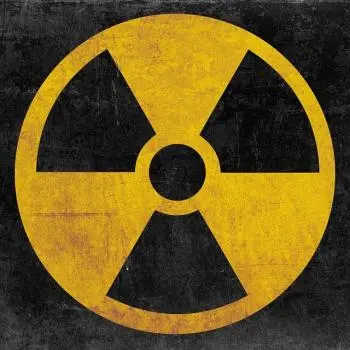
Radioactive isotopes are variants of the same chemical element that have a different number of neutrons in the atomic nucleus. This means that they have the same number of protons in their nucleus, which determines their chemical identity, but they differ in the number of neutrons present.
Radioactivity refers to the property of certain unstable atomic nuclei to spontaneously decay over time. During this process, nuclei emit subatomic particles and radiation in the form of alpha rays (alpha particles), beta rays (beta particles), and gamma rays.
This radioactive decay can be accompanied by the emission of high-energy particles and the release of energy in the form of radiation.
How are radioactive isotopes obtained?
Radioactive isotopes can have different origins depending on their nature.
Natural origin
First, some radioactive isotopes form naturally on Earth as a result of the decay of primordial radioactive elements. For example, uranium-238 decays in a series of stages to form a number of radioactive isotopes, including radium-226 and lead-206. These isotopes are found in minerals and rocks, and their decay over time is used in radiometric dating to determine the age of geological and archaeological objects.
Artificial origin
In addition, radioactive isotopes are also generated artificially in nuclear reactors and particle accelerators. In nuclear reactors, radioactive isotopes are produced by nuclear fission, which is the splitting of heavy atomic nuclei such as uranium-235 and plutonium-239. These radioactive isotopes are used in nuclear power generation and in industrial and scientific applications.
In particle accelerators, radioactive isotopes are generated by nuclear reactions induced by bombardment of accelerated particles.
Applications of Radioactive Isotopes
Radioactive isotopes have various applications in different fields. Here are some examples of how they are used:
Nuclear medicine
Radioactive isotopes are used in medical diagnosis and treatment. In nuclear medicine, radioactive isotopes are administered to the patient and special detectors are used to obtain detailed images of the inside of the body.
These techniques make it possible to detect diseases, evaluate the function of organs and tissues, and carry out targeted treatments, such as radiotherapy.
radiometric dating
Radioactive isotopes are used to determine the age of ancient objects and geological events.
For example, carbon-14 is used to date organic materials, such as bones and archaeological remains, while uranium-238 is used to date rocks and minerals.
nuclear power generation
One way to generate electricity is by using isotopes such as uranium-235 and plutonium-239 as nuclear fuel in nuclear reactors. These isotopes undergo nuclear fission, releasing a large amount of energy in the form of heat, which is transformed into electricity through steam turbines.
Scientific investigation
Radioactive isotopes are used in scientific research to study the structure and properties of atoms, perform tracing experiments, and trace the pathways of substances in biological and chemical systems.
Quality control and inspection
Radioactive isotopes are used in some materials inspection processes and the measurement of thicknesses, densities and compositions. They are also used in leak detection and industrial radiography to assess the integrity of structures and welds.
Agriculture and food security
In agricultural research they are used to study plant growth, nutrient metabolism, and fertilizer efficiency. They are also used in the detection of pesticides and the irradiation of food for its conservation and elimination of microorganisms.
Radioactive Isotopes Hazards
Radioactive isotopes present certain risks to health and the environment. Here are some of the associated risks:
Ionizing radiation: Emitted radiation can be harmful to living tissue. It can damage cells and DNA, which can result in acute effects such as burns, acute radiation syndrome, and damage to internal organs. Chronic exposure to low doses of radiation can increase the risk of cancer and long-term genetic disorders.
Radioactive contamination: The uncontrolled release of radioactive isotopes into the environment can lead to radioactive contamination. This can occur as a result of nuclear accidents, nuclear reactor leaks, mishandling of radioactive materials, or improper disposal of radioactive waste. Radioactive contamination can affect the health of people, wildlife, and ecosystems, and can persist for long periods of time.
Occupational Hazards: People who work in the nuclear industry, nuclear medicine, and other areas related to radioactive materials may face occupational hazards. Prolonged or high exposure to radiation can have detrimental effects on your health.
Transportation Hazards: Transportation of radioactive materials, such as radioactive isotopes used in medicine and research, presents certain hazards. Strict regulations and safety protocols must be followed to ensure safe transportation and minimize the risk of radiation exposure in the event of accidents or leaks.
Nuclear Safety Concerns: Radioactive isotopes can also pose safety risks in the context of nuclear power. The safety and adequate management of nuclear reactors, the management of radioactive waste and the prevention of nuclear accidents are critical aspects to minimize risks to health and the environment.
